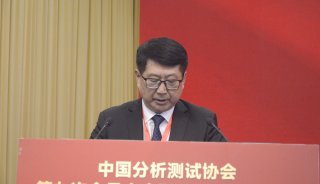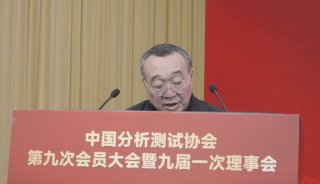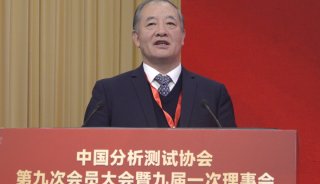Comprehensive identification of novel proteins and N-glycosylation sites九
41. Schmidt O, Theopold U, Strand M: Innate immunity and its evasion and suppression by hymenopteran endoparasitoids. BioEssays 2001, 23(4):344–351.
42. Asgari S, Zhang G, Zareie R, Schmidt O: A serine proteinase homolog venom protein from an endoparasitoid wasp inhibits melanization of the host hemolymph. Insect Biochem Molec 2003, 33(10):1017–1024.
43. Asgari S, Theopold U, Wellby C, Schmidt O: A protein with protective properties against the cellular defense reactions in insects. Proc Natl Acad Sci U S A 1998, 95(7):3690–3695.
44. Riddell C, Adams S, Schmid-Hempel P, Mallon EB: Differential expression of immune defences is associated with specific host-parasite interactions in insects. PLoS One 2009, 4(10):e7621.
45. Casteels P, Ampe C, Jacobs F, Tempst P: Functional and chemical characterization of Hymenoptaecin, an antibacterial polypeptide that is infection-inducible in the honeybee (Apis mellifera). J Biol Chem 1993, 268(10):7044–7054.
46. Hung CC, Huang KF, Chiou SH: Characterization of one novel venom protease with β-Fibrinogenase activity from the Taiwan Habu (Trimeresurus mucrosquamatus): purification and cDNA sequence analysis. Biochem Bioph Res Co 1994, 205(3):1707–1715.
47. Hoffmann JA: Innate immunity of insects. Curr Opin Immunol 1995, 7(1):4–10.
48. Narita Y, Nomura J, Ohta S, Inoh Y, Suzuki KM, Araki Y, Okada S, Matsumoto I, Isohama Y, Abe K: Royal jelly stimulates bone formation: physiologic and nutrigenomic studies with mice and cell lines. Biosci Biotechnol Biochem 2006, 70(10):2508–2514.
49. Nelson R, Fessler L, Takagi Y, Blumberg B, Keene D, Olson P, Parker C, Fessler J: Peroxidasin: a novel enzyme-matrix protein of Drosophila development. EMBO J 1994, 13(15):3438.
50. Yang G, Han Y, Tian X, Tao J, Sun M, Kang J, Yan C: Pattern of expression of the CREG gene and CREG protein in the mouse embryo. Mol Biol Rep 2011, 38(3):2133–2140.
51. Kamakura M: Royalactin induces queen differentiation in honeybees. Nature 2011, 473(7348):478–483.
52. Nilsson J, Ruetschi U, Halim A, Hesse C, Carlsohn E, Brinkmalm G, Larson G: Enrichment of glycopeptides for glycan structure and attachment site identification. Nat Methods 2009, 6(11):809–811.
53. Alvarez-Manilla G, Warren NL, Atwood J 3rd, Orlando R, Dalton S, Pierce M: Glycoproteomic analysis of embryonic stem cells: identification of potential glycobiomarkers using lectin affinity chromatography of glycopeptides. J Proteome Res 2010, 9(5):2062–2075.
54. Zhang H, Li XJ, Martin DB, Aebersold R: Identification and quantification of N-linked glycoproteins using hydrazide chemistry, stable isotope labeling and mass spectrometry. Nat Biotechnol 2003, 21(6):660–666.
55. Altschul SF, Madden TL, Schäffer AA, Zhang J, Zhang Z, Miller W, Lipman DJ: Gapped BLAST and PSI-BLAST: a new generation of protein database search programs. Nucleic Acids Res 1997, 25(17):3389–3402.
56. Hurtley SM, Helenius A: Protein oligomerization in the endoplasmic reticulum. Annu Rev Cell Biol 1989, 5:277–307.
57. Klausner RD, Sitia R: Protein degradation in the endoplasmic reticulum. Cell 1990, 62(4):611–614.
58. Rademacher TW, Parekh RB, Dwek RA: Glycobiology. Annu Rev Biochem 1998, 57:785–838.
59. Tams JW, Vind J, Welinder KG: Adapting protein solubility by glycosylation. N-glycosylation mutants of Coprinus cinereus peroxidase in salt and organic solutions. Biochim Biophys Acta 1999, 1432(2):214–221.
60. Majtan J, Kováčová E, Bíliková K, Šimúth J: The immunostimulatory effect of the recombinant apalbumin 1–major honeybee royal jelly protein–on TNFα release. Int Immunopharmacol 2006, 6(2):269–278.
61. Šimúth J, Bíliková K, Kováčová E, Kuzmová Z, Schroder W: Immunochemical approach to detection of adulteration in honey: physiologically active royal jelly protein stimulating TNF-α release is a regular component of honey. J Agr Food Chem 2004, 52(8):2154–2158.
62. Romain F, Horn C, Pescher P, Namane A, Riviere M, Puzo G, Barzu O, Marchal G: Deglycosylation of the 45/47 – kilodalton antigen complex of Mycobacterium tuberculosis decreases its capacity toelicit in vivo or in vitro cellular immune responses. Infect Immun 1999, 67(11):5567–5572.
63. Chan QWT, Melathopoulos AP, Pernal SF, Foster LJ: The innate immune and systemic response in honey bees to a bacterial pathogen, Paenibacillus larvae. BMC Genomics 2009, 10(1):387.
64. Nyberg GB, Balcarcel RR, Follstad BD, Stephanopoulos G, Wang DI: Metabolic effects on recombinant interferon‐γ glycosylation in continuous culture of Chinese hamster ovary cells. Biotechno Bioeng 1999,62(3):336–347.
65. Brady RO, Kanfer J, Shapiro D: The metabolism of glucocerebrosides I. Purification and properties of a lucocerebroside-cleaving enzyme from spleen tissue. J Biol Chem 1965, 240(1):39–43.
66. Chiba S: Molecular mechanism in alpha-glucosidase and glucoamylase. Biosci Biotechnol Biochem 1997, 61(8):1233–1239.
67. Winchester B: Role of alpha-D-mannosidases in the biosynthesis and catabolism of glycoproteins. Biochem Soc T 1984, 12(3):522–524.
68. Pal S, Tak YK, Song JM: Does the antibacterial activity of silver nanoparticles depend on the shape of the nanoparticle? A study of the gram-negative bacterium Escherichia coli. Appl Environ Microb 2007,73(6):1712–1720.
69. Oh PS, Lim KT: Antioxidant activity of Dioscorea batatas Decne glycoprotein. Eur Food Res Technol 2008, 226(3):507–515.
70. Majumder K, Wu J: A new approach for identification of novel antihypertensive peptides from egg proteins by QSAR and
bioinformatics. Food Res Int 2010, 43(5):1371–1378.
71. Maselli RA, Richman DP, Wollmann RL: Inflammation at the neuromuscular junction in myasthenia gravis. Neurology 1991, 41(9):1497–1504.
72. Zhang L, Fang Y, Li RL, Feng M, Han B, Zhou T, Li JK: Towards posttranslational modification proteome of royal jelly. J Proteomics 2012,75(17):5327–5341.
73. Schlenke TA, Begun DJ: Natural selection drives Drosophila immune system evolution. Genetics 2003, 164(4):1471–1480.
74. Whitten MMA, Tew IF, Lee BL, Ratcliffe NA: A novel role for an insect apolipoprotein (apolipophorin III) in β-1,3-glucan pattern recognition and cellular encapsulation reactions. J Immunol 2004, 172(4):2177–2185.
75. Weers PMM, Ryan RO: Apolipophorin III: Role model apolipoprotein. Insect Biochem Molec 2006, 36(4):231–240.
76. Lemaitre B, Nicolas E, Michaut L, Reichhart JM, Hoffmann JA: The dorsoventral regulatory gene cassette spatzle/Toll/cactus controls the potent antifungal response in Drosophila adults. Cell 1996, 86(6):973–983.
77. Niere M, meisslitzer C, Dettloff M, Weise C, Ziegler M, Wiesner A: Insect immune activation by recombinant Galleria mellonella apolipophorin III. BBA-Protein Struct M 1999, 1433(1–2):16–26.
78. Niu Y, Xie T, Ge K, Lin Y, Lu S: Effects of extracellular matrix glycosylation on proliferation and apoptosis of human dermal fibroblasts via the receptor for advanced glycosylated end products. Am J Dermatopathology 2008, 30(4):344–351.
79. Kawamura K, Shibata T, Saget O, Peel D, Bryant PJ: A new family of growth factors produced by the fat body and active on Drosophila imaginal disc cells. Development 1999, 126(2):211–219.
80. Sarov-Blat L, So WV, Liu L, Rosbash M: The Drosophila takeout Gene is a novel molecular link between circadian rhythms and feeding behavior. Cell 2000, 101(6):647–656.
81. Jones J, Krag SS, Betenbaugh MJ: Controlling N-linked glycan site occupancy. Biochim Biophys Acta 2005, 1726(2):121–137.
82. Galperin MY, Nikolskaya AN, Koonin EV: Novel domains of the prokaryotic two-component signal transduction systems. FEMS Microbiol Lett 2001,203(1):11–21.
83. Rigden DJ, Jedrzeja MJ, Galperin MY: An extracellular calcium-binding domain in bacteria with a distant relationship to EF-hands. FEMS Microbiol Lett 2003, 221(1):103–110.
84. Szymanski CM, Wren BW: Protein glycosylation in bacterial mucosal pathogens. Nat Rev Microbiol 2005, 3(3):225–237.
85. Wisniewski JR, Zougman A, Nagaraj N, Mann M: Universal sample preparation method for proteome analysis. Nat Meth 2009, 6(5):359–362.
86. Crooks GE, Hon G, Chandonia JM, Brenner SE: WebLogo: A Sequence Logo Generator. Genome Res 2004, 4(6):1188–1190.
-
焦点事件

-
焦点事件














